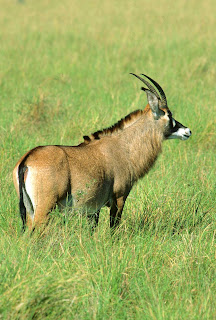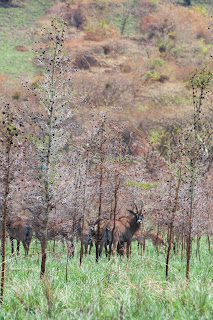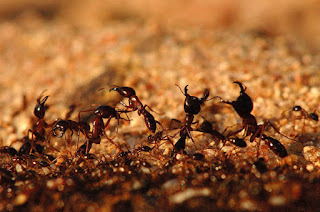In the heart of Meru National Park, there is a twin baobab tree that served as a hide out, kitchen and meat store for the Mau Mau in the 1950s. This tree holds some of the secrets about Field Marshal Musa Mwariama, the highest-ranking Mau Mau leader who survived the war without being killed or captured by the colonialists. Mwariama and his troop would slaughter animals and hang all the meat inside the hollow baobab tree. They had hammered wooden pegs inside the hollowed trunk for hanging the meat to avoid vultures from following and betraying Mau Mau to the colonial forces.
Born M'Kirigua M'Muchiri in 1928 at Athinga, Muthara in Tigania East, Mwariama whose childhood name was Baringo, was commander of hundreds of Mau Mau fighters in Mt Kenya and Nyambene Hills bases. He rose from the rank of General to Field Marshal after the capture and killing of Field Marshal Dedan Kimathi. He had a towering height with constantly searching glances that made him hypnotising and intimidating.
The mere mention of Mwariama's name sent shivers down the backs of the invaders from the British Isles. Because of him, they had to carry their guns at all times, for no one knew the moment and time when Musa Mwariama would suddenly appear from nowhere like a ghost, and exact punishment to the colonialists for their crimes against the natives.
When the colonial soldiers discovered the hide out, there was a fierce battle. Mwariama and his team had to flee toward Tana River which is not so far from the tree. To save his life, Mwariama had to jump into the deep raging river. Once in the river, he was lucky to find a drifting log which he held onto and drifted to the other side of the river. When the 'wabeberu' reached at the bank of the river and saw Mwariama running on the other side of the river, they were amazed at how a human could have jumped across a very wide river.
Mwariama and his troop avoided cooked food to enhance their natural senses. The diet without cooked food also increased the sense of smell and also reduced body odour, making it harder for trackers to pick up the fighter’s scent.
Mwariama’s death in 1989 was ironical. For more than 10 years, he had survived colonial bullets, deadly traps, wild animals, very tough terrain and weather but died from envenomation after he sucked snake venom out of his friend’s leg. It is claimed the snake’s venom entered his blood stream through cavities in his teeth. The fried survived. The ultimate sacrifice. A true patriot who died saving a life just like he spent a decade fighting for freedom.
After Kenya gained independent in 1963, Mwariama and his troop refused to leave the forest fearing for his safely. Emissaries had to be sent to his hideout to assure him Kenya was finally ‘free’. Unfortunately, it is a black man, who was more ruthless and crueller than the white man, who finally put Mwariama in chains and stole his dignity as Mwariama was charged with treason and thrown in prison for 6 months. While the others were given land and government positions in Nairobi, Mwariama was handed a pitiful job as assistant chief, whereby he later resigned.
David Njagi’s book ‘The Last Mau Mau Field Marshals’ has detailed stories about Mwariama and other Mau Mau fighters.














